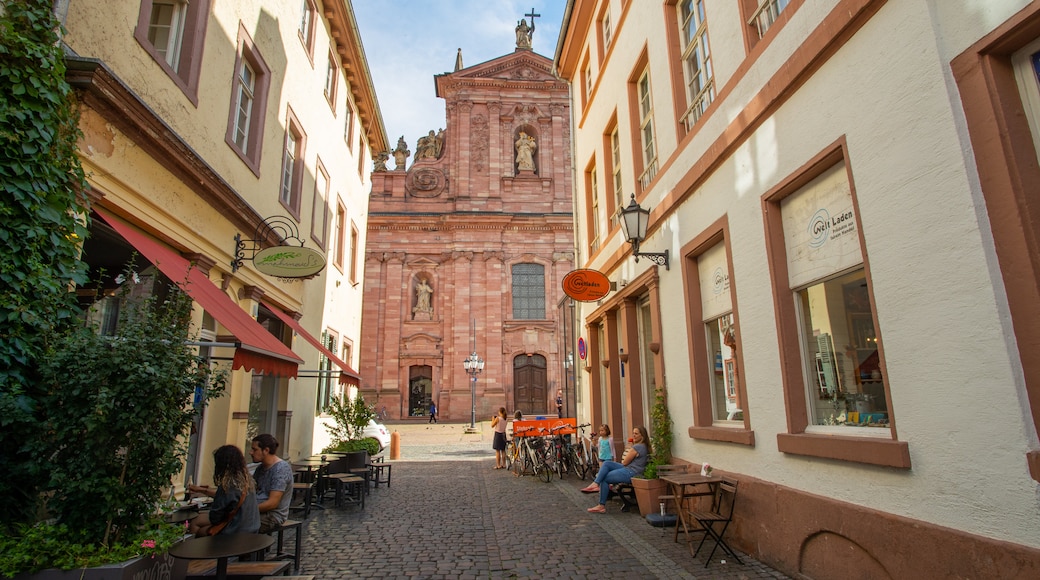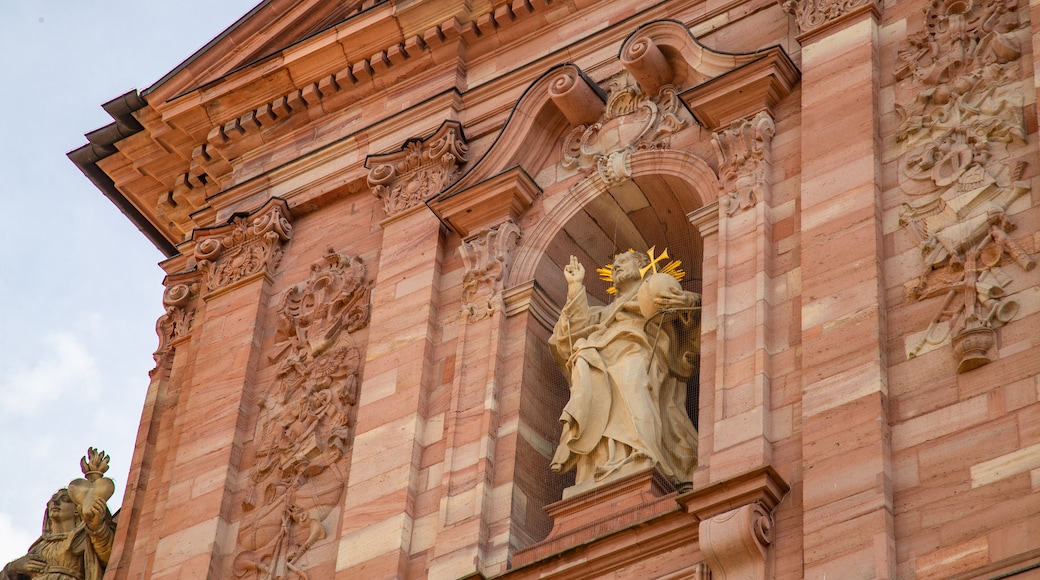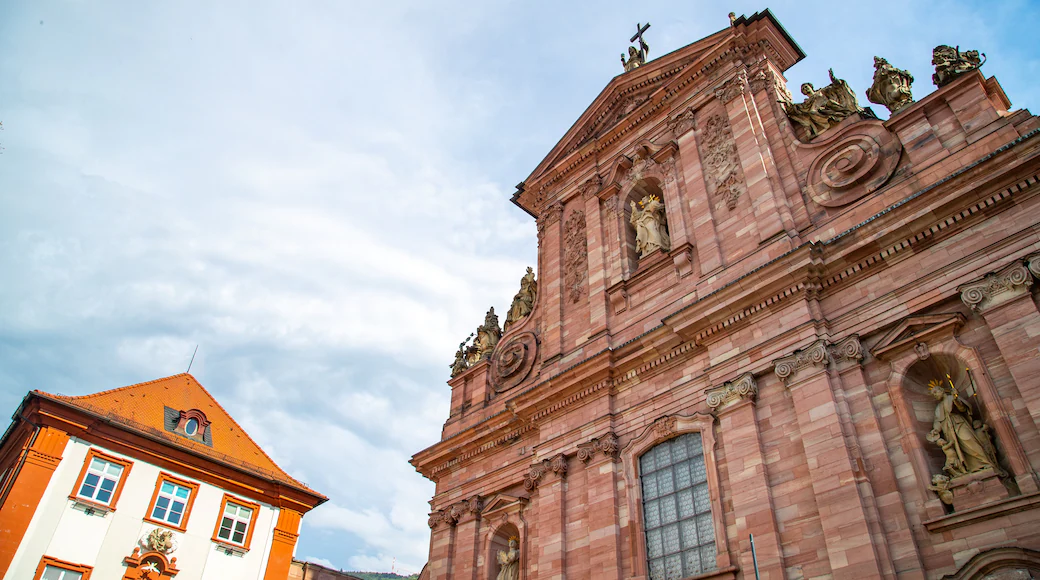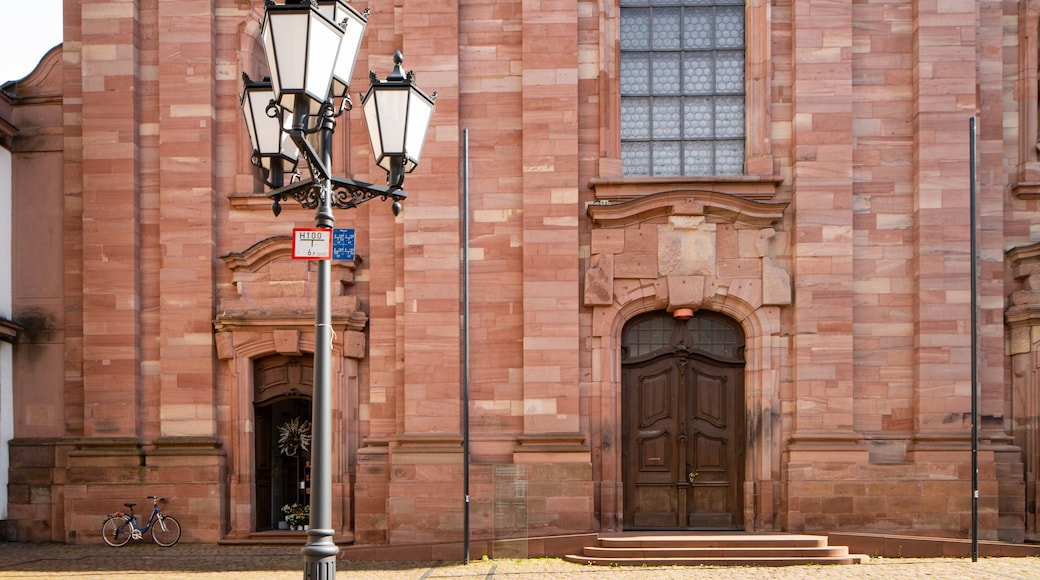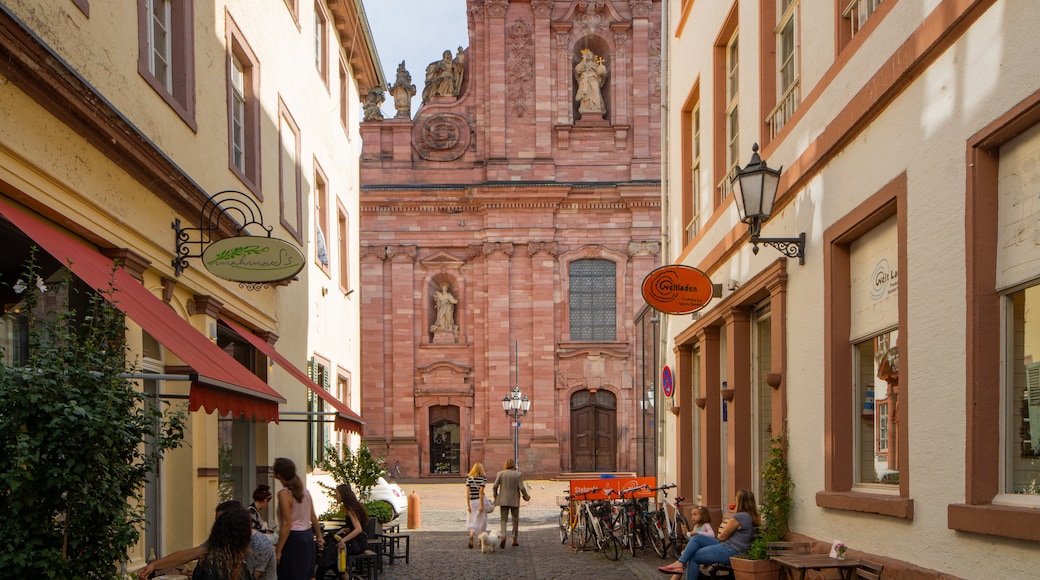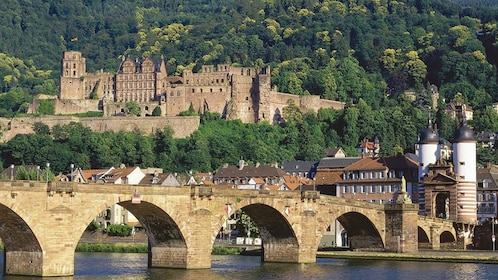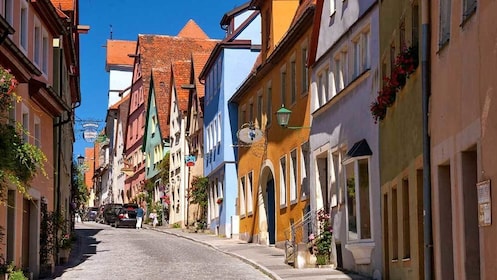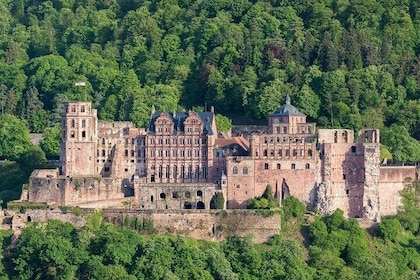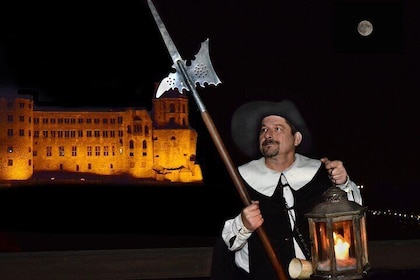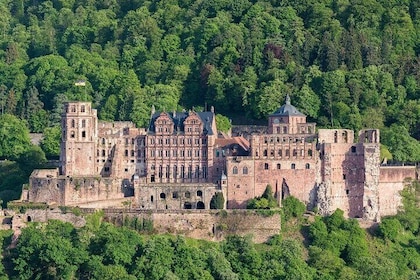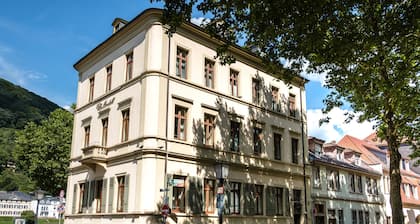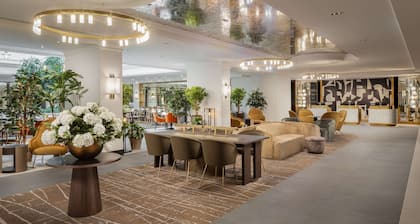A holdout of the Palatine’s Catholic populace during the wars of religion that rocked Germany through the 16th and 17th centuries, the Jesuitenkirche has architecture known almost as well as its history. It was built in the 18th century in an elaborate Baroque style. The façade, unusually, faces south instead of east, flooding the church with afternoon light. Meander down the small streets of Heidelberg’s Altstadt in search of the pink sandstone exterior that characterizes so many religious buildings in the city.
From the small square in front, look up at the statues. Over each of the side portals are St. Ignatius and St. Francis Xavier, two of the founders of the Jesuit order that was at its peak when the church was built. After the order was abolished in 1773, the church had numerous functions. Spot the neo-Baroque tower that was added in the 19th century, as well as the gable decorations.
Go inside the modern interior, where high arches and gold decoration fill the church with a meditative atmosphere. Walk slowly around to see how interesting stained-glass windows cast colorful shadows over the light walls.
Make your way up to the altar to admire one of the original elements of the Baroque interior, an altar panel by a student of Kaulbach. Go out into the small adjoining cloister, which explodes with colorful blooms in the spring and summer.
End your visit sitting in one of the pews to appreciate the tranquil atmosphere of the space.
It’s easy to spot the Jesuitenkirche when you look for it, right in the middle of Heidelberg’s Altstadt. Take the bus from the central Heidelberg train station in 15 minutes, walk in just over 30 minutes or drive in 10. Walk from the river cruise terminal in 8 minutes. The Marktplatz is only a 4-minute walk away. Hours vary based on season, but the church is generally open to visitors daily. Sunday services are open to visitors. The church has no admission fee.
